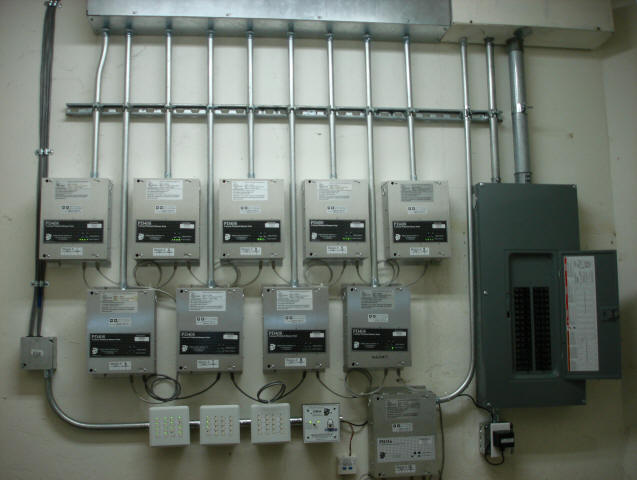|
Learn the the mystery behind dimming systems.
Why choose the
PROTOCOL ?
Because it is
reliable, simple and very reasonably priced ; it is designed and
manufactured in the USA and backed by a personalized technical support from
design to turn ON.
-
the Protocol Lighting
control system has only two
main components, the PS Series wall station modules and the PD Series dimmer
and switch modules. These two basic building blocks can be used in multiple locations to
create dimming systems for controlling as few as 4 loads or as many as 1000 loads. No
other components are required for the operation of the system. All system
modules interconnect via a low-voltage, four-wire, power and communication bus.
-
The totally
distributed processing and memory storage eliminate the need for a central processing unit (CPU/CCU)
and provides
the Protocol system with three major benefits associated with
distributed processing:
-
First, from a technical
viewpoint, this eliminates
catastrophic system wide shutdowns which may result from a malfunction of the CPU or CCU in other similar systems.
The installation is easier and sort of plug and play with
preprogrammed systems. Any electrician can install the PROTOCOL.
-
Second, with no additional cost for a CPU,
the Protocol system is a sound choice for small and lower budget installations.
The cost of a lighting control system, using the
Protocol becomes truly
proportional to the number of loads it is controlling.
-
Third, with only
two kinds of main modules used by Protocol systems, maintenance can be
performed quickly and inexpensively and does not require highly skilled service
personnel.
|
|
Most importantly DIGITAL LIGHTING SYSTEMS
PROTOCOL
cost is lower by up to 50 percent over comparable systems in the market.
Just give us a try. (example of a basic system
set up ) Lighting reps and dealer inquiries are welcome. [Dealer/Rep
Inquiry]
Also, besides Architectural lighting control the
PROTOCOL has
found its usage in Museums, Interactive displays, Solar panel sun tracking,
Industrial equipment control and other applications not directly related to
lighting. |
|
Typical PROTOCOL lighting control
system installation
 |

